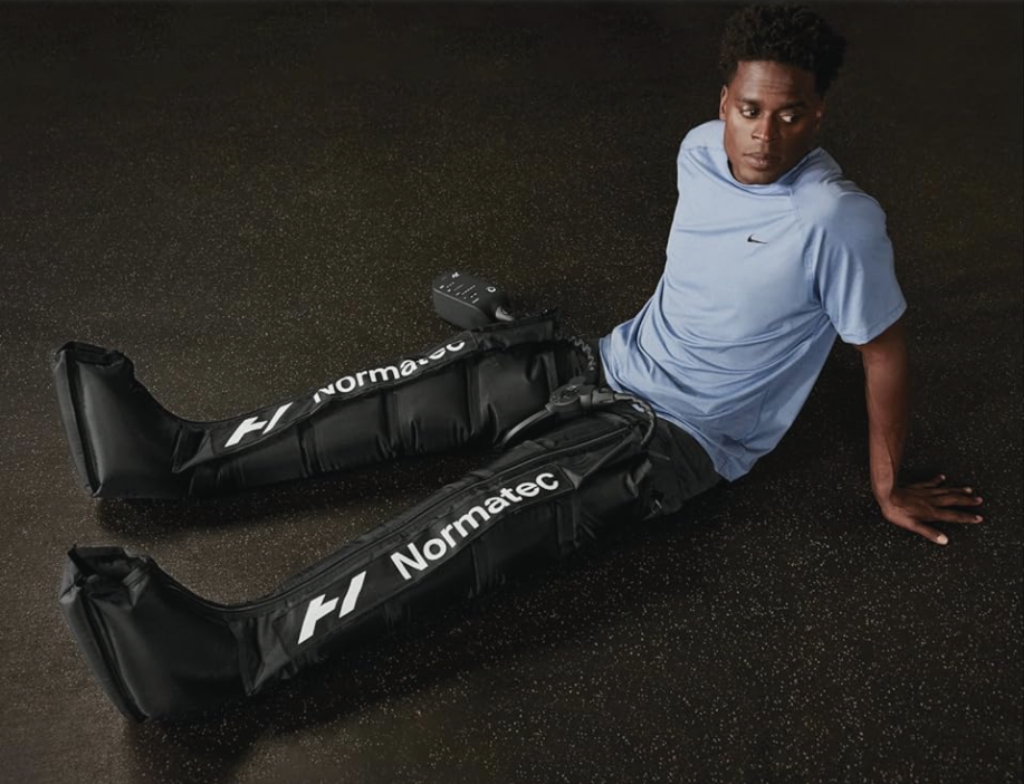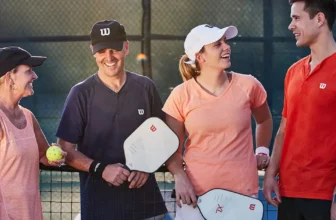Pickleball has grown rapidly in popularity as a recreational sport among middle-aged and older adults ages 40-60 years. Over the past decade, pickleball participation has nearly tripled in this age group, who make up the majority of players.
As such, understanding and preventing common pickleball injuries in older athletes is an important consideration, as well as considering contrast therapy.
Contrast therapy involves alternating applications of warm and chilly modalities to an injured or painful area. This therapeutic approach causes alternating vasodilation and vasoconstriction, which is thought to reduce pain, swelling, and muscle spasm while facilitating rehabilitation. Contrast therapy has been used effectively to treat acute injuries, aid post-exercise recovery, and manage chronic conditions like arthritis, affecting pain reduction.
Proven Benefits of Contrast Therapy
Contrast therapy involves alternating applications of warm and chilly modalities to an injured or painful area. This therapeutic approach causes alternating vasodilation and vasoconstriction, which is thought to reduce pain, swelling, and muscle spasm while facilitating rehabilitation. Contrast therapy has been used effectively to treat acute injuries, aid post-exercise recovery, and manage chronic conditions like arthritis, affecting pain reduction.
Contrast therapy has been shown to provide several key benefits, especially for reducing pain and inflammation. One randomized controlled trial examining the effects of contrast bath therapy (CBT) versus exercise alone for patients with knee osteoarthritis found that the CBT group had a 34% decrease from baseline in worst knee pain per the Knee Injury and Osteoarthritis Outcome Score (KOOS), compared to only a 12% decrease in the exercise-only group. This difference between groups was statistically significant (p=0.001).
Another randomized study comparing CBT, hot packs only, and cold packs only for knee osteoarthritis patients found that while all 3 modalities reduced pain, the contrast group had the greatest pre-post treatment improvement in pain scores on the visual analog scale (VAS), with a mean improvement of 4.3 points.
This was significantly better than hot packs alone (3.1 points, p<0.05) or cold packs alone (2.9 points, p<0.05). Additionally, the study highlighted a significant improvement in pain reduction and knee range of motion.
So multiple studies have shown contrast therapy leads to clinically meaningful reductions in pain from osteoarthritic knees, with decreases ranging from 12-34% on validated pain scales. The data indicates significantly greater pain relief with the alternating hot and cool of CBT compared to heat or cold
Using Contrast Therapy for Common Pickleball Injuries
Contrast therapy can be an effective treatment for many of the injuries commonly seen in pickleball players:

Ankle sprains: Very common injury from sudden turning or pivoting movements, often causing pain and impaired mobility. Contrast therapy can help reduce swelling and facilitate rehabilitation.
Achilles tendon injuries: Strains causing pain anywhere along the tendon take weeks to heal. More severe ruptures often require surgery. Contrast therapy can aid conservative treatment. Contrast therapy is also beneficial for managing soft tissue injury, aiding in recovery and improving range of motion.
Knee injuries: Sprains of collateral ligaments are common from sudden movements. Can also include acute meniscal tears or more severe ligament injuries requiring extensive treatment. Contrast therapy can reduce knee joint pain and swelling.
Muscle strains: Occur in lower extremity muscle groups like hamstrings, quadriceps, calves from abrupt motions. Also happen in core/back from repetitive trunk rotation. Upper extremity strains can occur at the wrist, elbow from repetitive ball striking. Contrast therapy alleviates muscle soreness. Additionally, it can help with delayed onset muscle soreness (DOMS), improving recovery and allowing athletes to continue their training programs without interruption.
So contrast therapy, with alternating warmth and cold, can facilitate rehabilitation and return to play for many of the most prevalent pickleball injuries involving sprains, strains, and tendon injuries.
Complementing with the Best Knee Brace for Meniscus Injury and Knee Pain
For pickleball players, especially those experiencing meniscus issues, integrating the use of the best knee brace for meniscus injury with contrast therapy can be a game-changer. The brace provides additional support and stability, helping to manage pain and prevent further injury during play and recovery. Check out the best knee braces for pickleball today, and find exactly what you need!
Application of Contrast Therapy and Cold Therapy
Contrast therapy involves alternating applications of heat and cold for set durations of time using a device providing contrast therapy:
- Alternate between hot pack and cold pack/ice massage. One cycle typically involves 3-5 minutes of heat followed by 1-2 minutes of cold.
- Heat therapy can help reduce pain, improve joint mobility, and aid in recovery from soft tissue or joint injuries.
- Repeat this hot-cold cycle 3-5 times during the treatment session.
- Begin and end the session with cold application. Starting with cold helps address inflammation while ending with cold prevents inflammation from recurring right after treatment.
So a sample contrast therapy protocol could be:
- Apply cold pack for 1 minute
- Apply hot pack for 3 minutes
- Apply cold pack for 1 minute
- Apply hot pack for 3 minutes
- Apply cold pack for 1 minute
- Apply hot pack for 3 minutes
- Finish with cold pack for 1 minute
The duration of heat and cold can be adjusted based on comfort and the individual’s condition. But keeping the ratio of 3-5 minutes hot to 1-2 minutes cold is generally recommended.
The Hyperice X device is particularly effective in reducing pain, swelling, and improving knee range of motion, with high patient satisfaction and clinical practicality. Check out more details here
Also, don’t forget to check out Hyperice Venom 2 – Advanced Heat + Vibration Wrap (Leg) – FSA or HSA Approved

Contrast Therapy: A Proven Method for Enhanced Recovery
Contrast therapy, alternating between hot and cold treatments, has long been used by athletes to improve recovery times. The hot treatments increase blood flow and flexibility, while the cold treatments reduce inflammation and numb pain. This combination helps to rejuvenate muscles and reduce recovery time significantly.

Another highly effective recovery method is the use of dynamic air compression technology, such as the Hyperice Normatec 3.0 Recovery System. This system enhances blood flow, reduces muscle soreness, and accelerates recovery, making it especially beneficial for athletes and sports enthusiasts undergoing intensive training.
By aiding in flushing out metabolic waste, reducing inflammation, and promoting faster muscle repair, this advanced recovery tool allows athletes to maintain peak performance, minimize downtime, and achieve their training goals more efficiently.
Conclusion
Based on the evidence, contrast therapy provides significant benefits for reducing pain and inflammation, especially for knee osteoarthritis. Subjective and objective measures, such as visual analog scale for pain, verbal patient satisfaction, knee circumference, and knee flexion range of motion, are used to evaluate the effectiveness of contrast therapy.
Multiple studies have shown clinically meaningful pain relief, with one trial finding a 34% decrease in worst knee pain and reduced knee swelling after contrast bath therapy. The data shows greater reductions with alternating heat and cold compared to either modality alone.
If opting to continue contrast therapy at home, tips include:
- Alternate heat and cold packs for set durations (e.g. 3-5 minutes heat, 1-2 minutes cold)
- Complete 3-5 cycles per session
- Can repeat daily or several times per week as needed
- Adjust durations based on comfort and individual condition
While this therapy can facilitate rehabilitation from injuries, it is important to also follow-up with a physical therapist or doctor for severe, prolonged, or worsening issues.
They can provide specialized treatment to aid recovery and return to activities. Contrast therapy is not intended to replace medical care for major injuries like fractures or ruptures, which often require immobilization, surgery, or extensive rehab.







